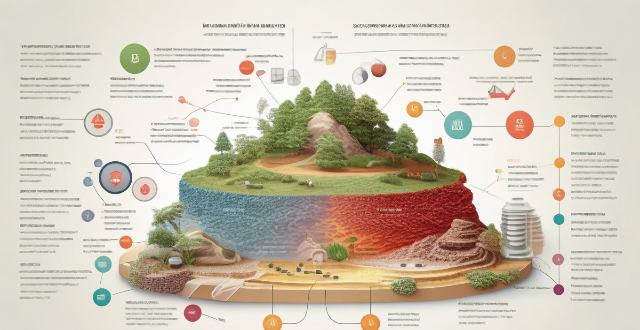Carbon sequestration is a process that aims to reduce atmospheric CO2 levels by capturing and storing carbon dioxide. The effectiveness of this process depends on various factors such as the rate of carbon sequestration, global emissions reduction efforts, and the health of natural carbon sinks. In the short term, it is unlikely that carbon sequestration alone will have a noticeable effect on atmospheric CO2 levels. However, in the medium to long term, if significant investments are made in scaling up carbon sequestration technologies and reducing global CO2 emissions, some noticeable effects may begin to emerge. These could include slower rates of CO2 accumulation, improved air quality, reduced global warming, and restoration of natural ecosystems. Therefore, sustained investments in carbon sequestration and other climate mitigation strategies can help achieve long-term reductions in atmospheric CO2 levels and mitigate the effects of climate change.

The Effectiveness of Carbon Sequestration on Atmospheric CO2 Levels
Carbon sequestration is a process that involves capturing and storing carbon dioxide (CO2) from the atmosphere to mitigate the effects of climate change. However, the question remains: how long will it take for carbon sequestration to have a noticeable effect on atmospheric CO2 levels?
Factors Affecting the Timeline
The timeline for noticeable effects of carbon sequestration on atmospheric CO2 levels depends on several factors, including:
- Rate of Carbon Sequestration: The rate at which carbon is being captured and stored plays a crucial role in determining the timeline. Faster rates of sequestration will lead to quicker reductions in atmospheric CO2 levels.
- Global Emissions Reduction: The effectiveness of carbon sequestration also depends on global efforts to reduce CO2 emissions. If emissions continue to rise, the impact of sequestration may be less noticeable.
- Natural Carbon Sinks: Natural processes such as photosynthesis by plants and trees also play a role in removing CO2 from the atmosphere. The health and productivity of these natural sinks can influence the overall effectiveness of carbon sequestration.
Potential Timelines
Given these factors, potential timelines for noticeable effects of carbon sequestration on atmospheric CO2 levels can vary widely. Here are some possible scenarios:
Short-Term Effects (1-5 years)
In the short term, it is unlikely that carbon sequestration alone will have a noticeable effect on atmospheric CO2 levels. This is because the current rate of global CO2 emissions far exceeds the capacity of existing carbon sequestration technologies.
Medium-Term Effects (5-20 years)
Over the medium term, if significant investments are made in scaling up carbon sequestration technologies and reducing global CO2 emissions, some noticeable effects may begin to emerge. These could include:
- Slower Rates of CO2 Accumulation: The rate at which CO2 accumulates in the atmosphere may start to slow down as more carbon is captured and stored.
- Improved Air Quality: Localized improvements in air quality may be observed in areas where large-scale carbon sequestration projects are implemented.
Long-Term Effects (20+ years)
In the long term, if sustained efforts are made to scale up carbon sequestration and reduce global CO2 emissions, more significant effects on atmospheric CO2 levels may become apparent. These could include:
- Reduced Global Warming: As atmospheric CO2 levels stabilize or even decrease, the rate of global warming may slow down or reverse.
- Restoration of Natural Ecosystems: With reduced CO2 levels, natural ecosystems such as forests and oceans may begin to recover from the negative impacts of climate change.
Conclusion
In conclusion, the timeline for noticeable effects of carbon sequestration on atmospheric CO2 levels is highly dependent on multiple factors, including the rate of carbon sequestration, global emissions reduction efforts, and the health of natural carbon sinks. While significant progress may not be immediately apparent, sustained investments in carbon sequestration and other climate mitigation strategies can help to achieve long-term reductions in atmospheric CO2 levels and mitigate the effects of climate change.